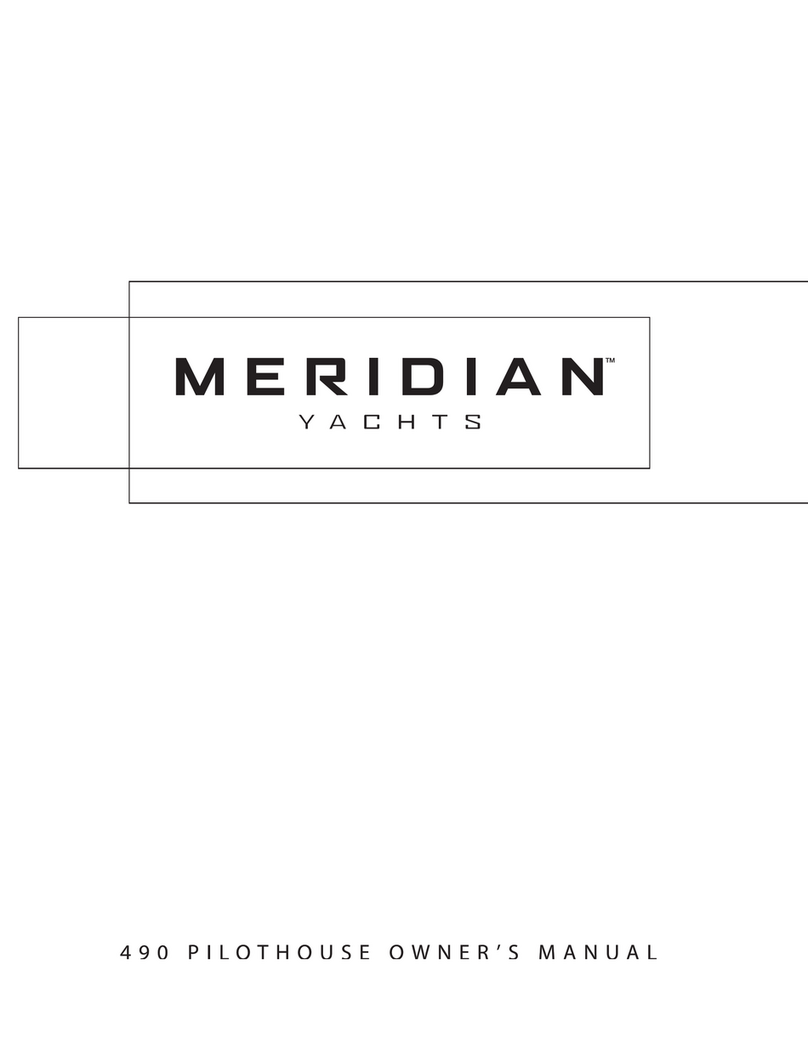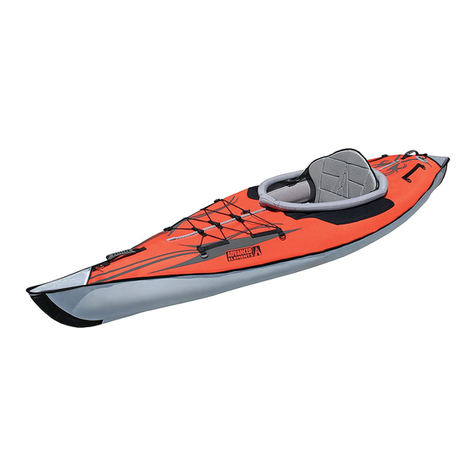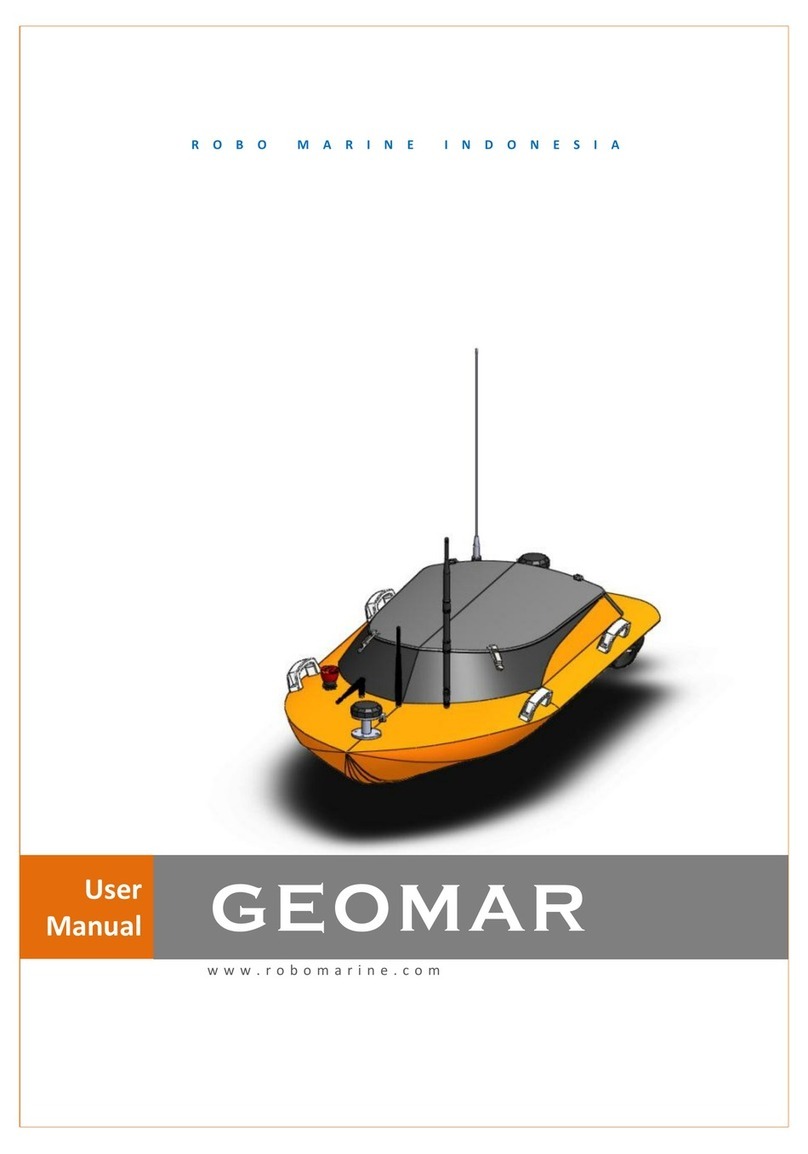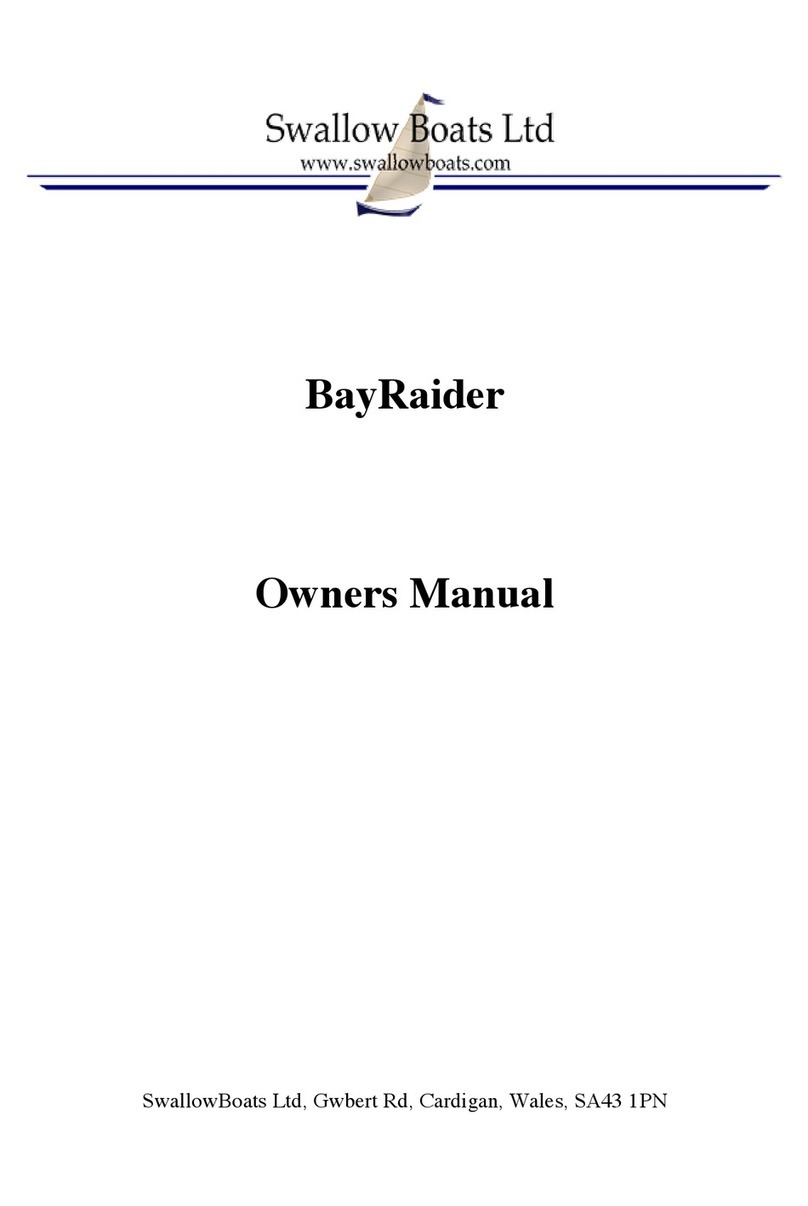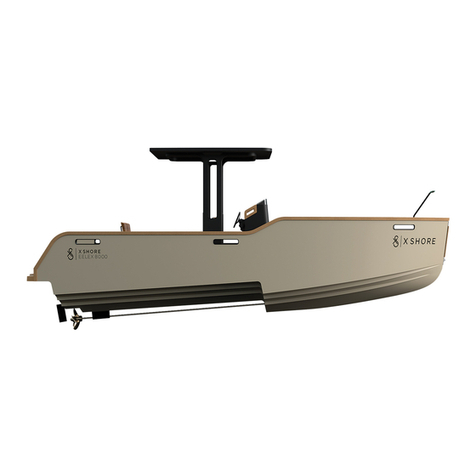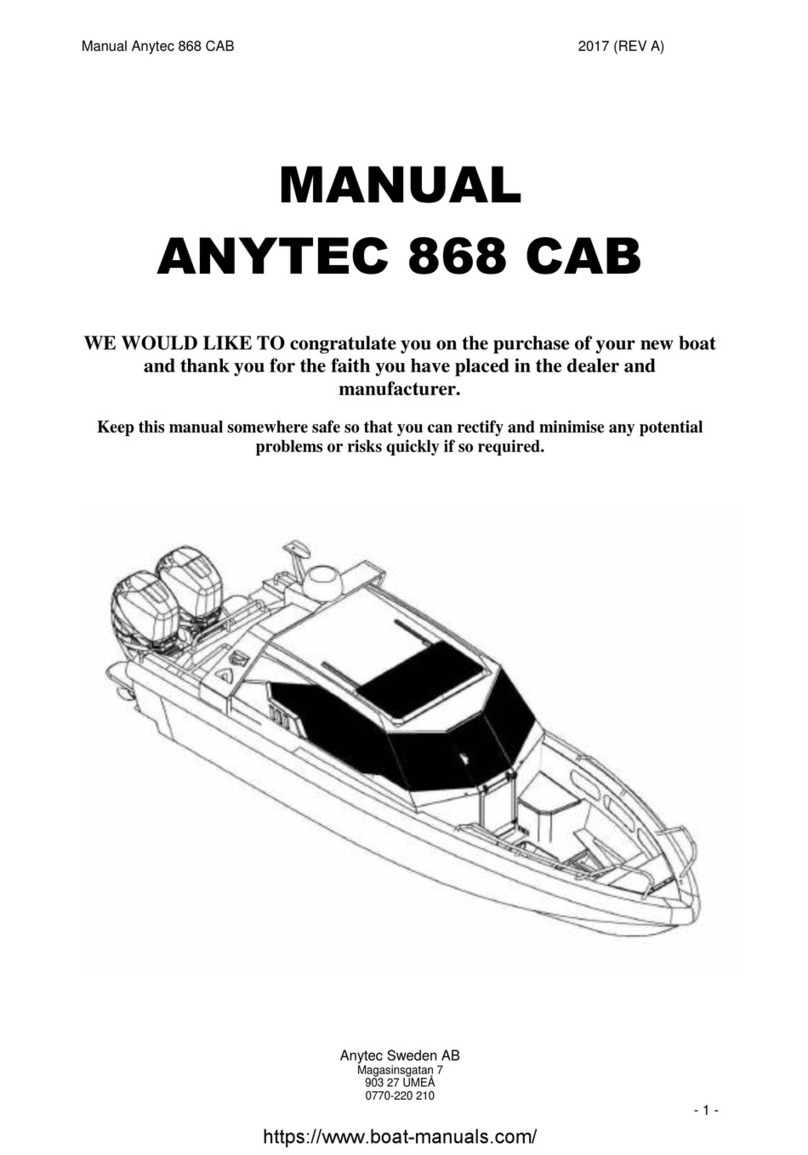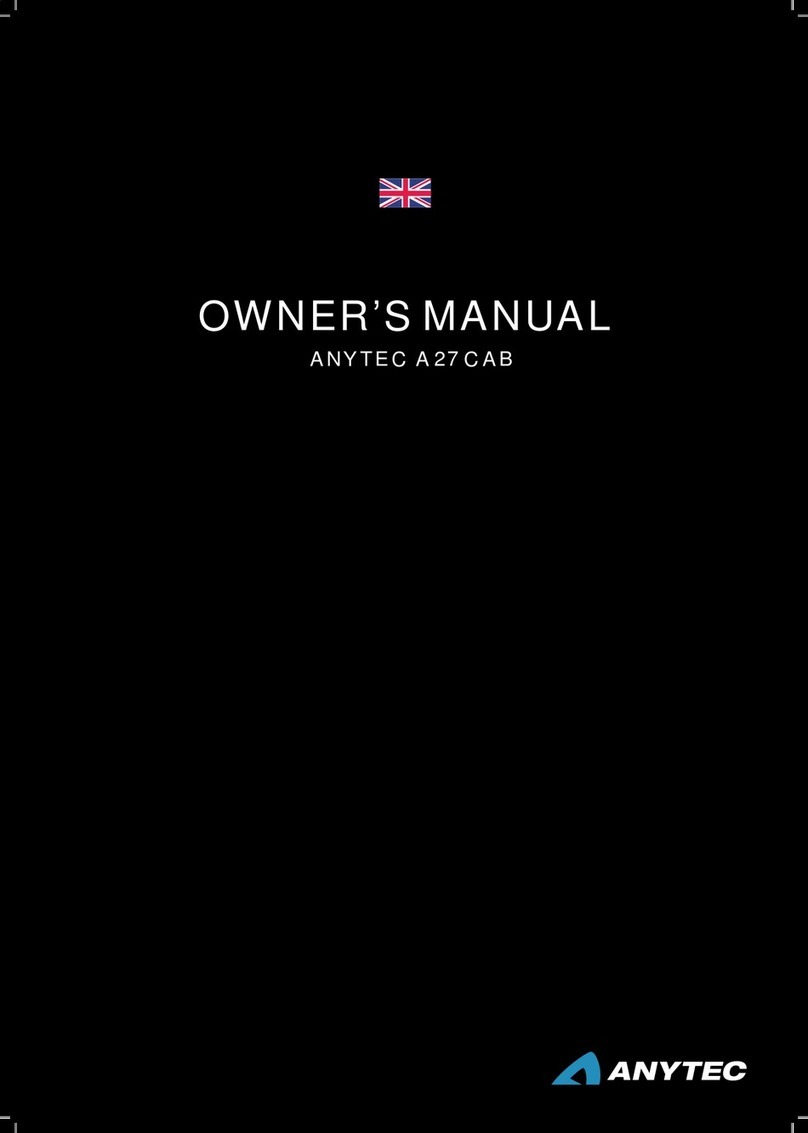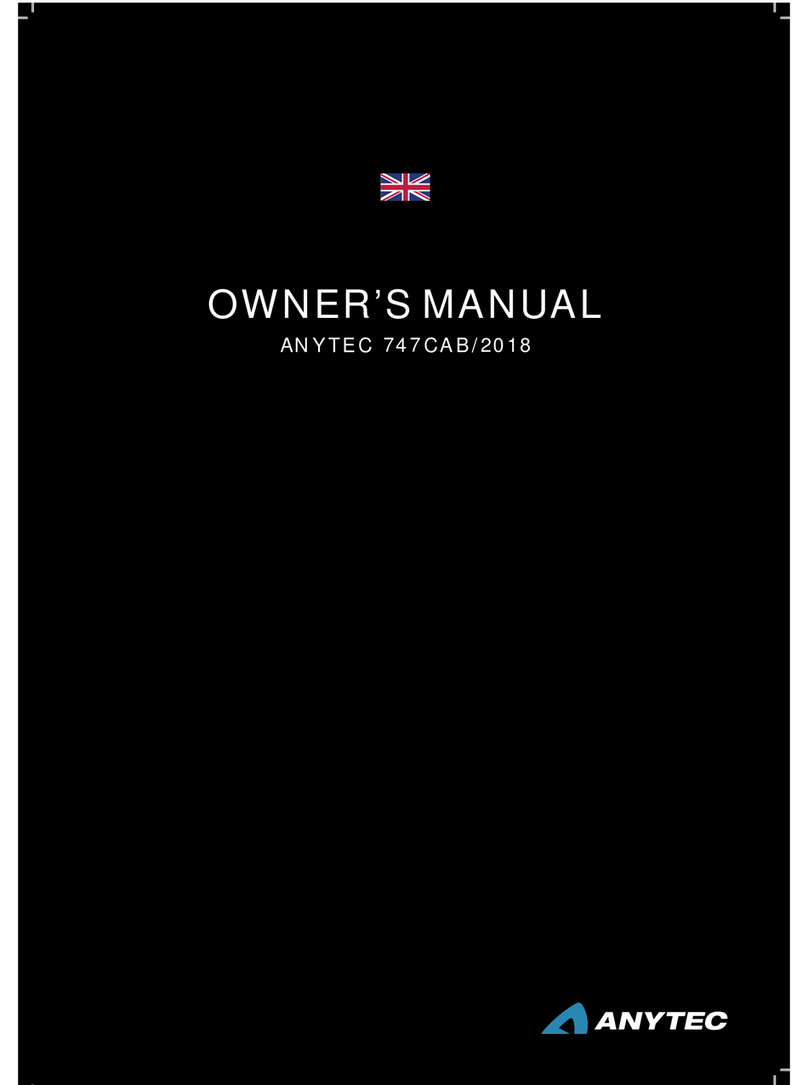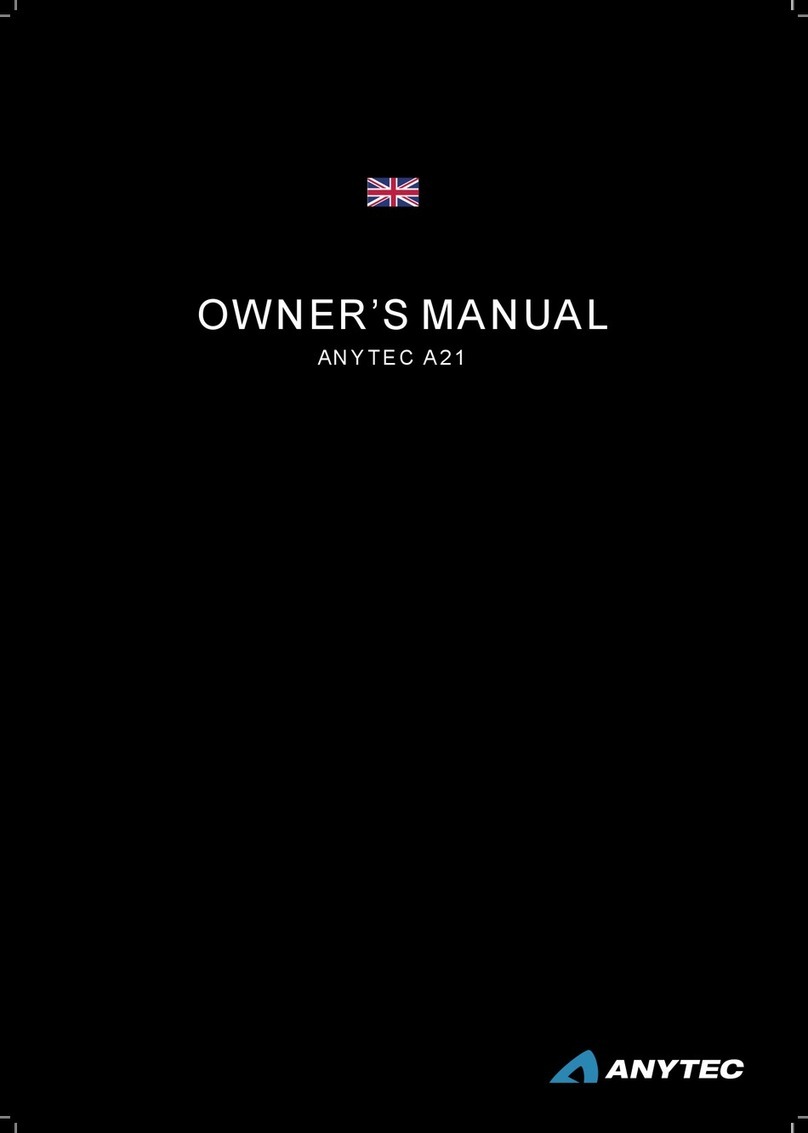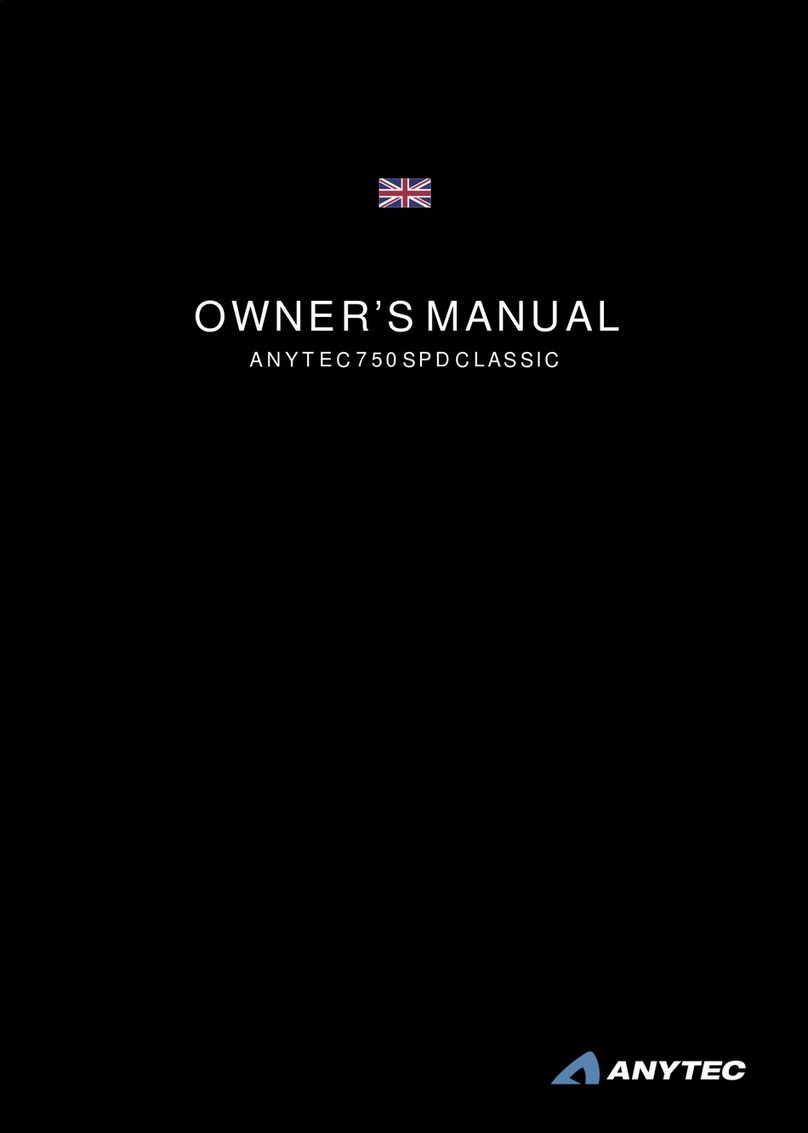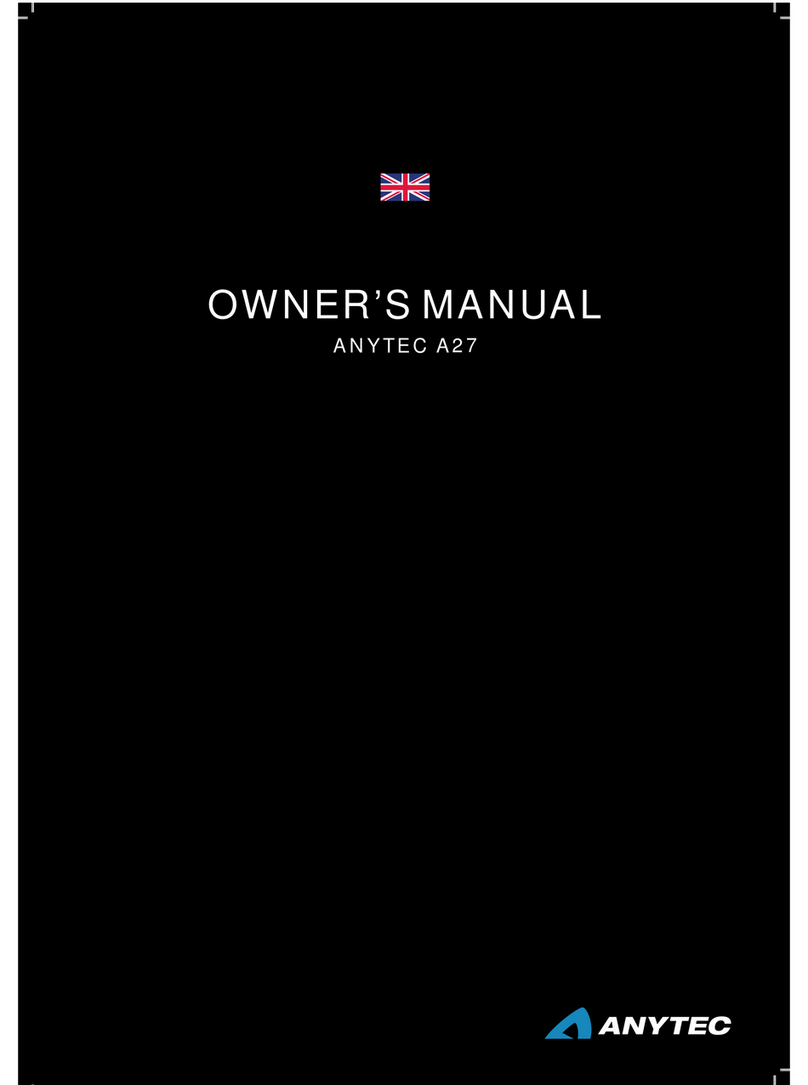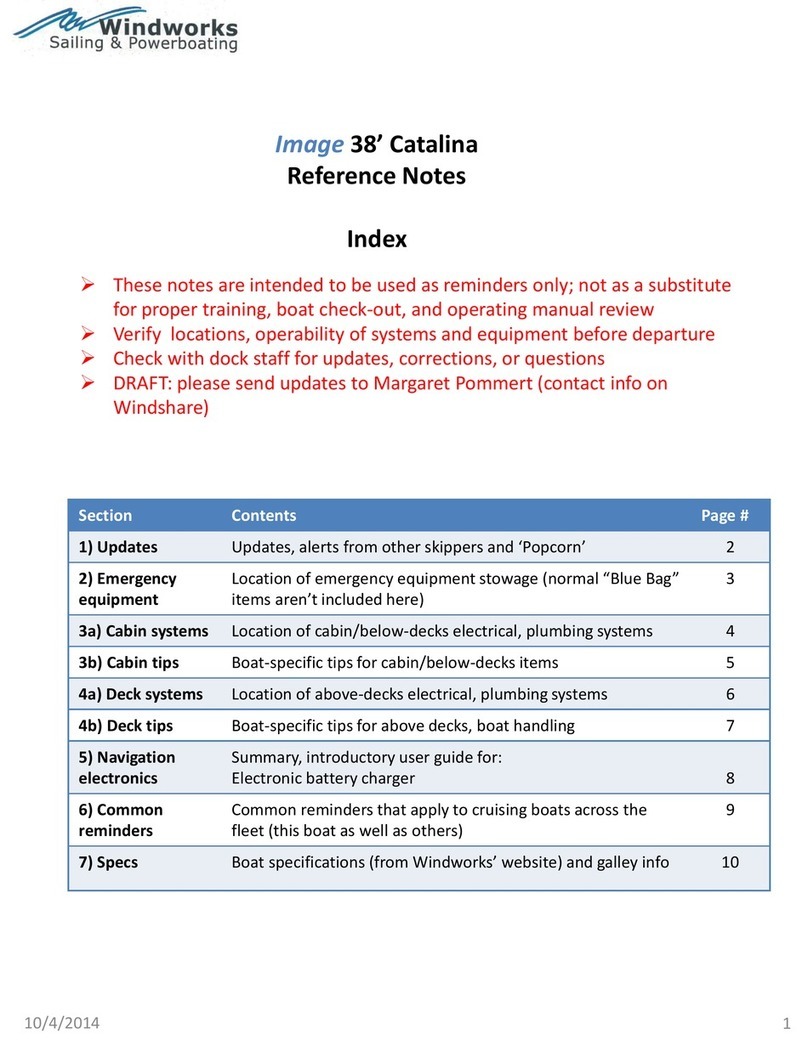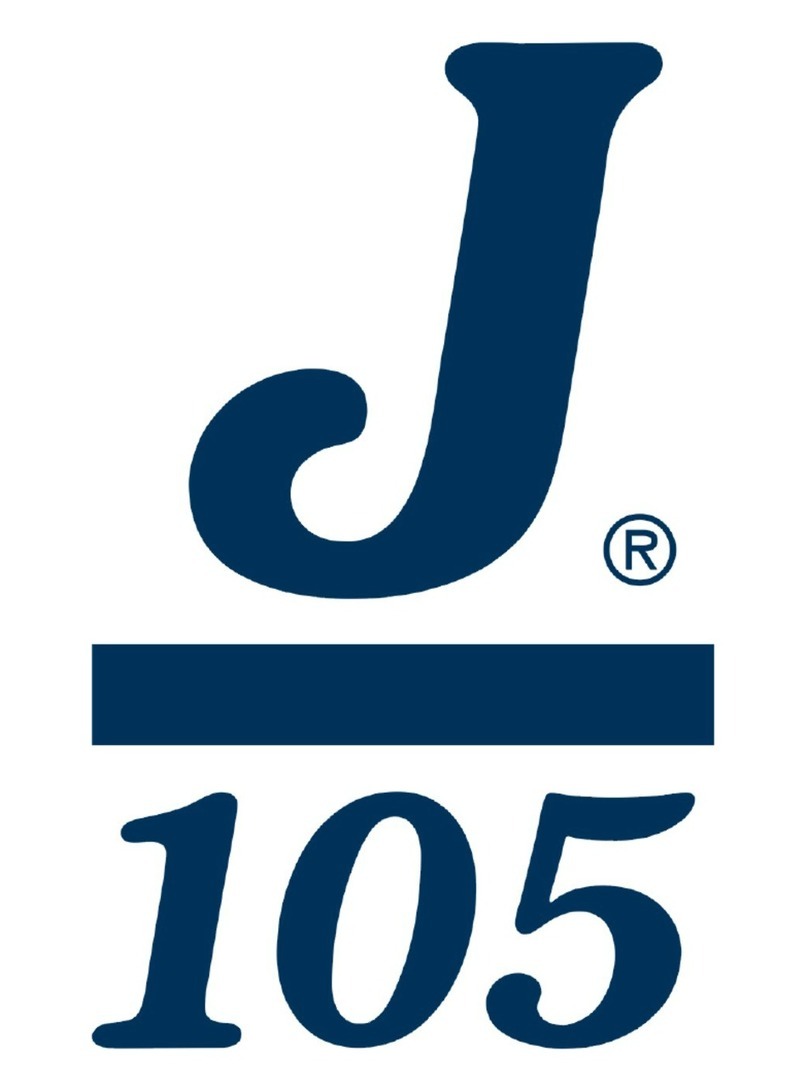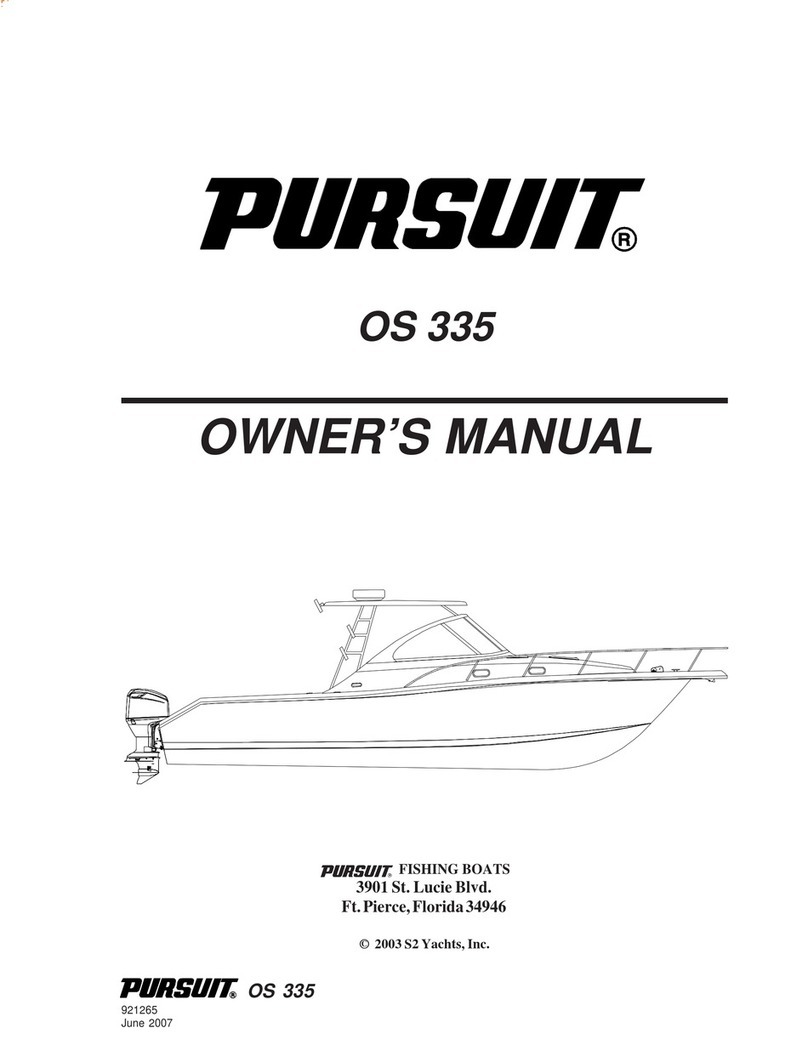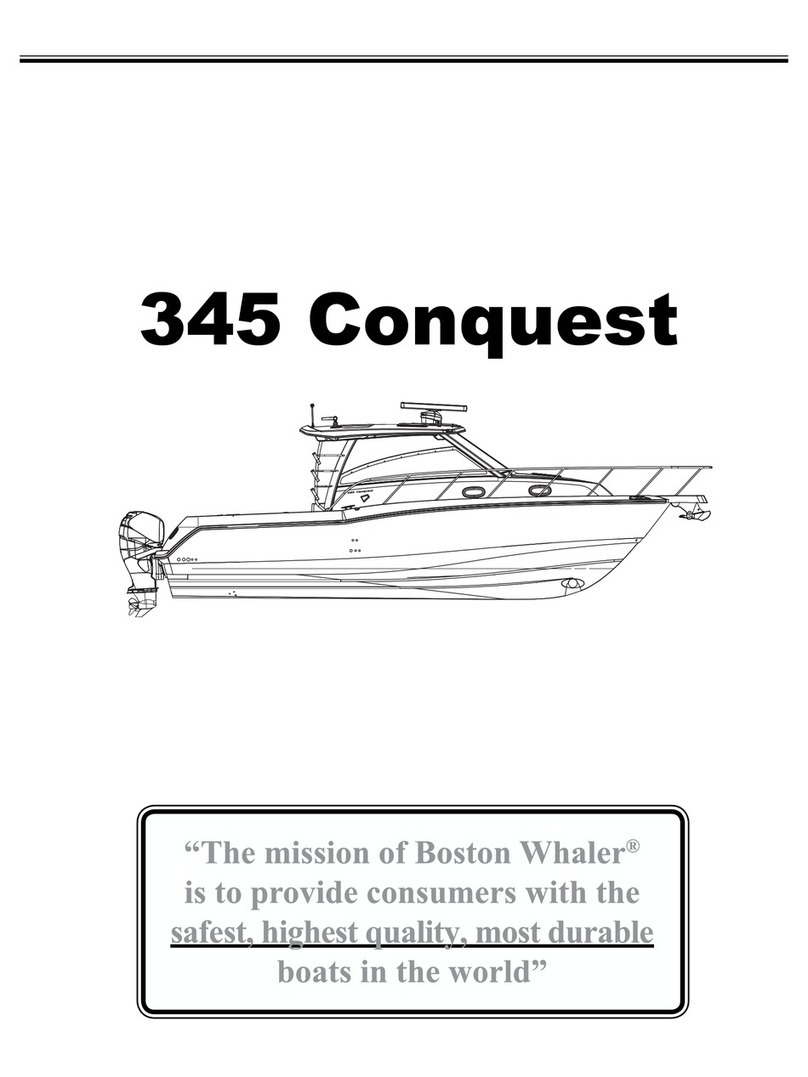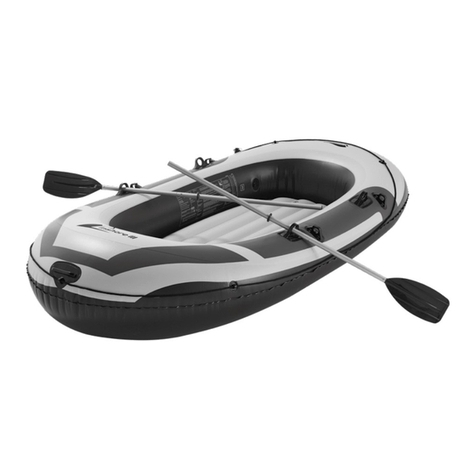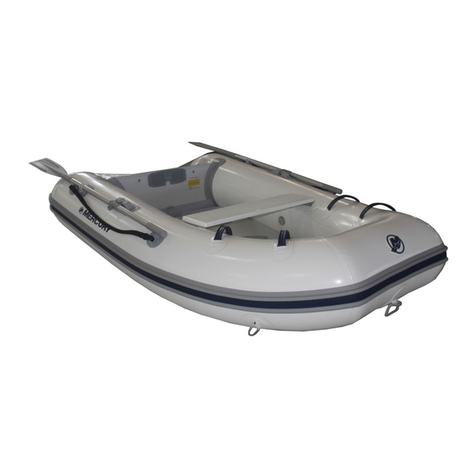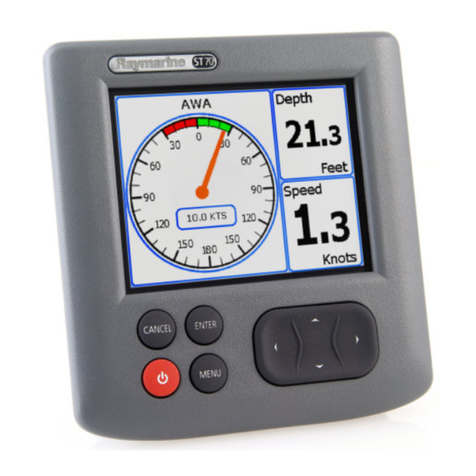4. 5.
When running along the direction of the waves the engine should be trimmed out so that the bow
lifts. Maintain your speed through the sea as well, at speed in a high head sea and following sea the
boat must be kept at right angles (90 degrees) to the waves. It is important that you know the boat
and its limitations. Pay attention to the warning sign on the steering console.The maximum steering
wheel lock should not be used at speeds in excess of 37 knots.
1.5. General Maintenance
We recommend continuous monitoring of the boat’s condition, both interior and exterior. Due to todays
high pollution levels we recommend that you clean the hull at regular intervals. Also make sure that the
antifouling on your boat is in good condition. Ideally, wash your boat on land. Avoid forceful brushing, and
ideallyuseahigh-pressurewasherjet.Avoidstrongsolutionsordetergents.
Aluminium creates a natural protective oxide which not be removed by polishing. For stainless steel parts
to withstand attacks, these must be polished with a suitable stainless steel polish at least once a year.
Inspect all electrical functions at regular intervals. Check the bilge pump, but make sure that the pump is
turned off after inspection.The manual bilge pump is effective right up to the stern, so get into the habit of
using it, so get into the habit of using it.
We recommend raising the boat in August in order to wash down the bottom and remove any fouling so as
to maintain the performance of your boat.Your boat may lose up to 15% of its normal performance in terms
of speed, which means an increase in fuel consumption.
O- Always consider the environment.
1.6.Winter layup
• Check the Engine manual
• Wash your boat both inside and out
• Remove all equipment, tools, etc. from your boat
• Remove the battery, charge it and store it in a dry, ventilated area which is free from frost (O), if the battery is
left in the boat, remove the cables from the terminals.
• Lubricate the control equipment (O).
• Unscrew the boat’s drain plug (bottom plug)
• Drain all water out of your boat and protect it from precipitation (O).
• Alwaysreplaceworncomponents(W)suchassacricialanodes(alsoapplicabletotheengine)
• Remove cushions and other textiles that may turn mouldy.
• Ensure that there is good ventilation
Trailer transport (W)
Checkthatthecentrerollersarebearingtheweightofthekeelcorrectly,andadjustthesidesupportssothatthey
prevent all lateral movement. Do not forget to secure your boat using tensioning belts. Do not load items / equip-
ment into the boat when it is being transported on a trailer.
Lifting with straps
Adjustthepositionsoftheliftingstrapssothattheboatissuspendedhorizontally(inbalance)whenitislifted.Make
sure that there is protection between the straps and the boat where necessary, otherwisethe D
fender may be damaged (O). Do not stand beneath the boat while it is suspended. (D)
1.7.Warranty
Pleaseseetheinstructionsoftherelevantsubcontractorforanyequipmentsupplied/tted.Anytecprovidesa
24-monthwarrantyonitsproduction.Intheeventofmajordamagetothehullormetalparts,pleasecontact
your dealer for a consultation. If this is not done within a reasonable time after discovering the damage / fault,
the warranty will cease to be valid.Warranty claims / complaints must be submitted in writing.Warranty work
will be carried out by the dealer or manufacturer unless agreed otherwise. In other respects we operate in
compliance with the applicable Consumer Sales Act.
1.2. Capacities
A maximum total load = 738 kg has been used during stability testing:
Crew weight (75 kg/passenger) 375 kg
Provisions and personal equipment 45 kg
Tools and spare parts 20 kg
Other 51 kg
Engine 235 kg
Maximum recommended load 726 kg
Petrol 63 kg
Maximum total load 789 kg
The following data must apply for the above load to be accepted:
• Dead weight of the boat, unladen 690 kg
• Equipment for safe use must be present on board
• Cushions in place
• All standard equipment on board
1.3. Performance
Weight during speed trials must be as follows:
• Weight, unladen, 690 kg
• Engine 115 hp 187 kg
• Crew (2) 150 kg
• Fuel 32 kg (min 22 liters, max 45 liters of gasoline)
MP, weight during speed trials = 1059 kg
Tests done with the above weight should result in a speed of around 39 knots. Speed trials must be conducted
in protected waters and with a wind strength of <= 3m / s.
1.4. CE
This boat has been given category C, with a crew limit of 5 passengers in accordance with ISO 12217-1.
Boats in this category are designed to travel close to the coast, in large bays, at estuaries, on lakes and rivers
whereconditionsmaybeuptoandincludingBeaufortforce6(equivalentto13.8m/s)andsignicant
waveheightsupto2m,providedthat:thecrewhassufcienttrainingand/orexperienceofoperationof
theboatandequipmenttted.
Users of this boat must ensure and be aware that:
• All members of the crew receive the necessary skills and training;
• The boat is not laden with weights in excess of the maximum load recommended by the manufacturer;
• Water in the keel area (bilge water) must be kept to a minimum;
• Stability is reduced by weights placed high up;
• In heavy weather, hatches must be kept closed so as to minimise the risk of water ingress; - stability may be reduced
if the boat is loaded incorrectly, displaced load.
• Waves can greatly affect stability.
• Uncontrolled evasive manoeuvres at high speed may give rise to sharp movements, pay attention to the “rules at
sea” sign mounted on the steering console
• When running in high head sea, the engine must be negatively trimmed (the bow is angled down).

